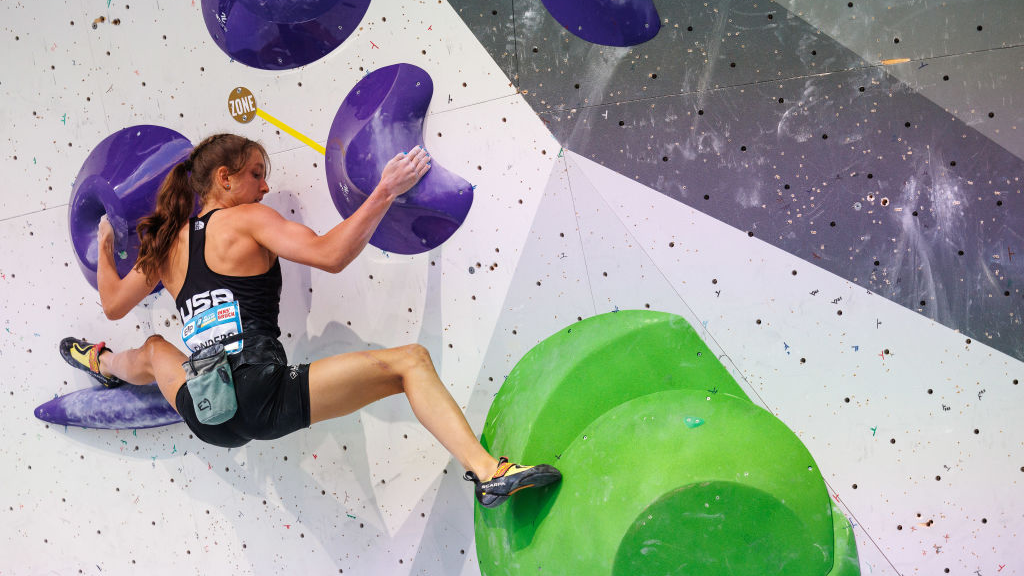The best running backpacks: for everything you need on the move
The best running backpacks give you storage, freedom of movement and features built for speed
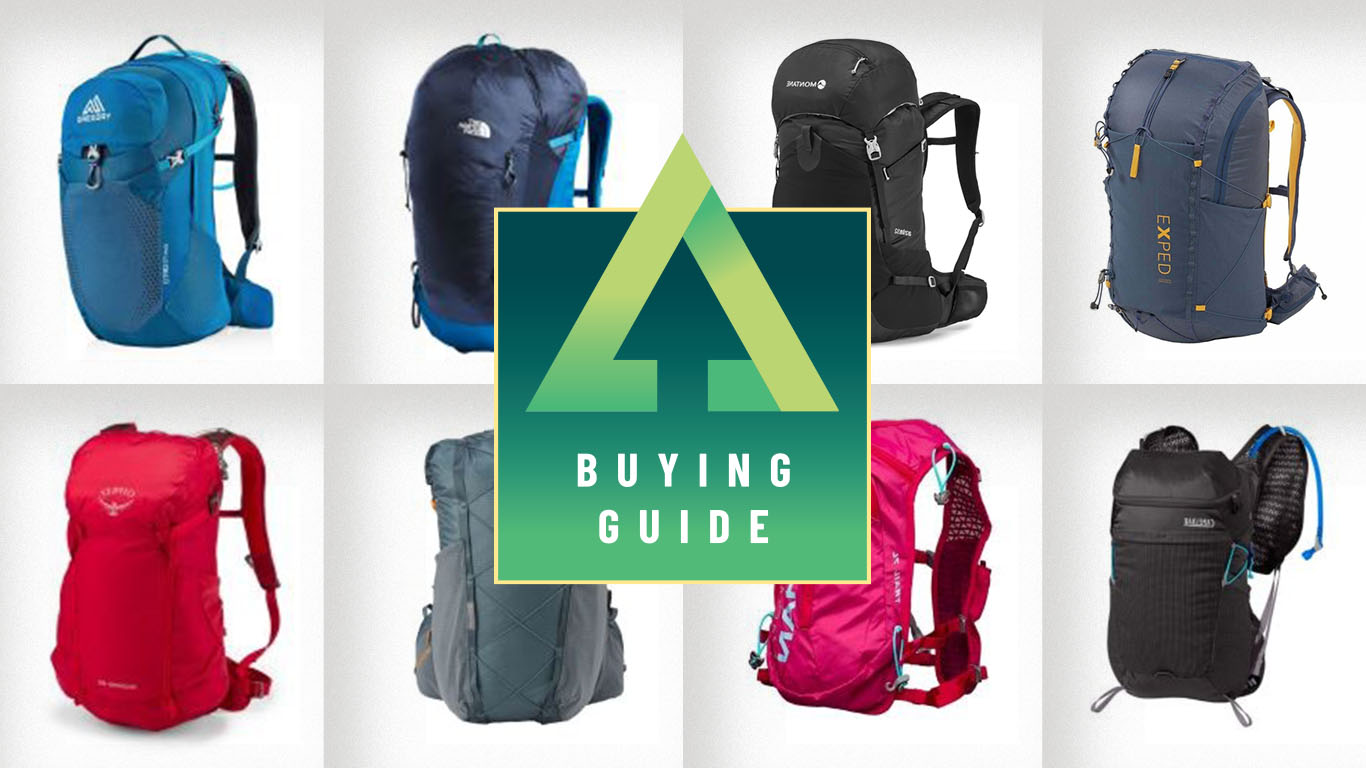
The best running backpacks are designed for adventure races and long speed hikes in the mountains. They occupy the blurred middle ground between a trail runner's hydration vest and a hiker's daypack, with many of the excellent packs featured in this guide more closely resembling the latter.
With capacities ranging from 7 to 32 liters, these packs are designed to carry a substantial amount of kit, more than just your emergency waterproof jacket, a whistle, water and some energy gels. These are packs for adventurers who expect to be out in the mountains all day and many work perfectly as hiker's packs too. We tested them on long runs and hikes in the backcountry.
As with the best hiking backpacks, these running packs are designed to give you stability and balance, as well as handy, on-the-go storage features. Hydration bladder compatibility comes as standard, with some even having a reservoir bundled in as part of the package.
For packs that work for adventure races and as hiking daypacks, we love both the Exped Impulse 30L and the Montane Azote 32. For smaller packs that are more suited to continuous running, we highly recommend Nathan's Trail-Mix 7L and Cambelbak's Octane 18.
The quick list
This is the quick list, a snapshot of the best running backpacks available in 2025. To delve deeper into the features and qualities of each featured pack, see our more detailed reviews further down the page in this guide.
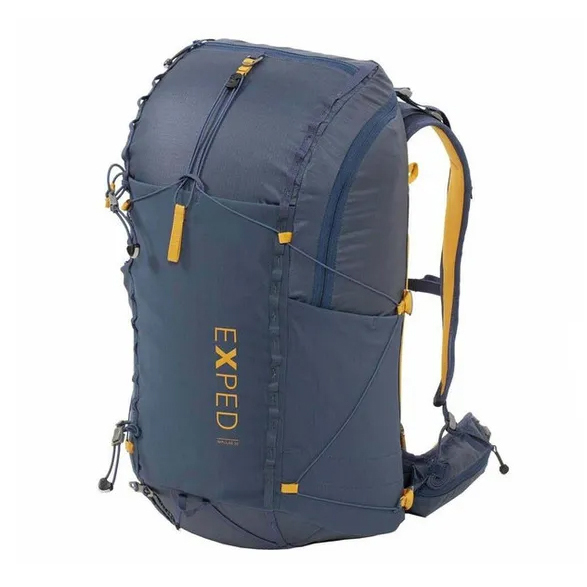
We love this versatile, well-considered daypack with plenty of storage and features to take you from the hills into more technical terrain
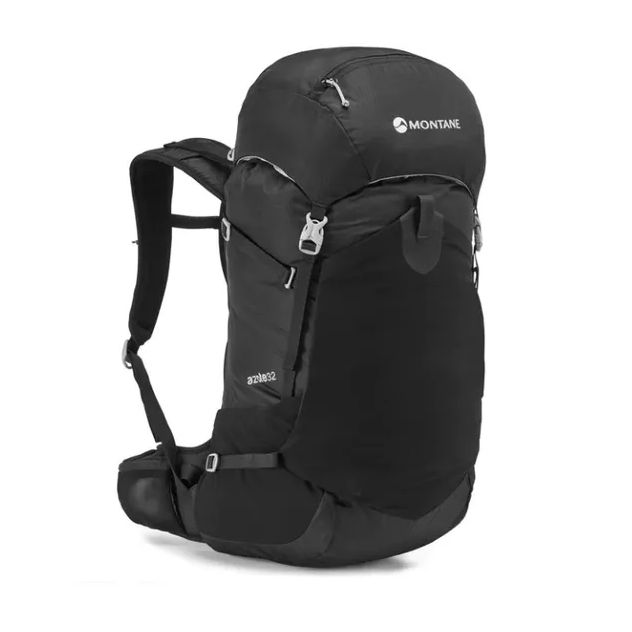
An unfussy but extremely capable pack for single-day adventures in all sorts of terrain, we're big fans of the Montane Azote 32
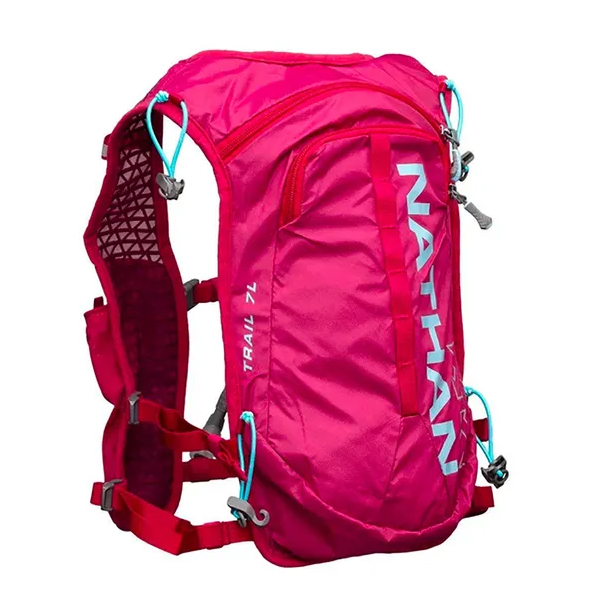
We approve of this nimble and wonderfully wearable little running pack that features a gender-specific fit and is perfect for shorter runs in the hills
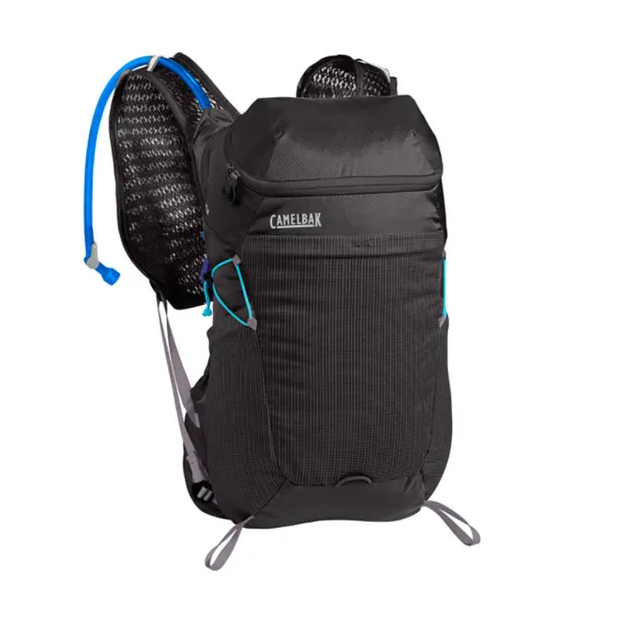
A super tough running backpack that's also super lightweight, features an easy-to-fill reservoir and provided us with a decent amount of storage too
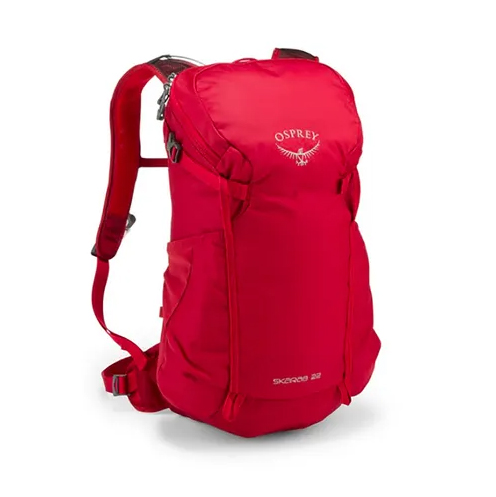
We like this roomy pack, that's highly adjustable, well-balanced and comfortable for all-day trail adventures in the hills and mountains
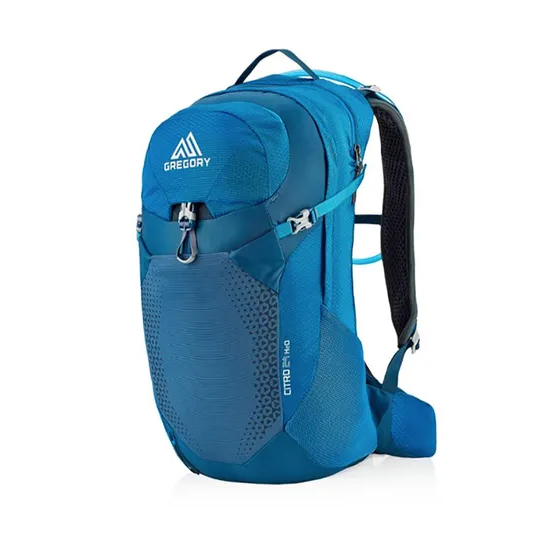
A pocket-rich running and hiking pack, which we think has an exceptional hydration system and storage management for long days in the wild
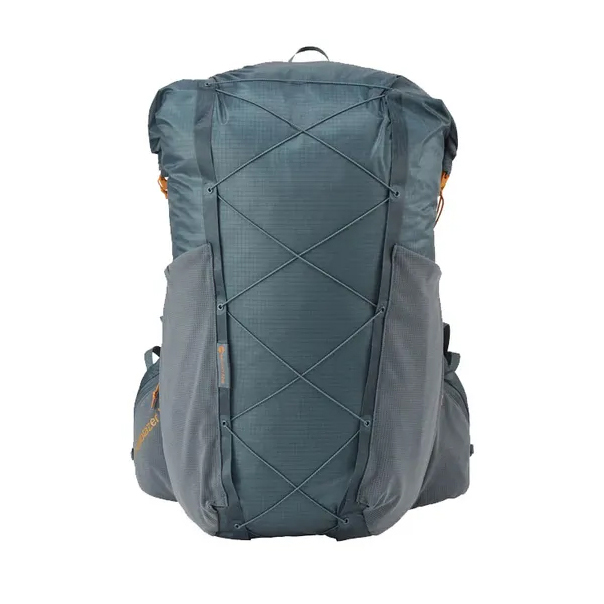
This body-hugging, lightweight design provides tons of gear storage for when we needed to move light and fast – and it's waterproof too
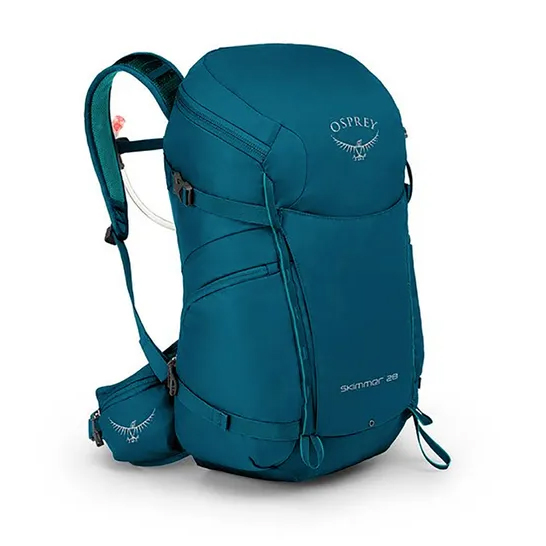
The solid, functional, classic design makes this one of the best running packs for women and it provided us with plenty of storage for our adventures too
The best running backpacks 2025
You can trust Advnture
The best running backpack overall
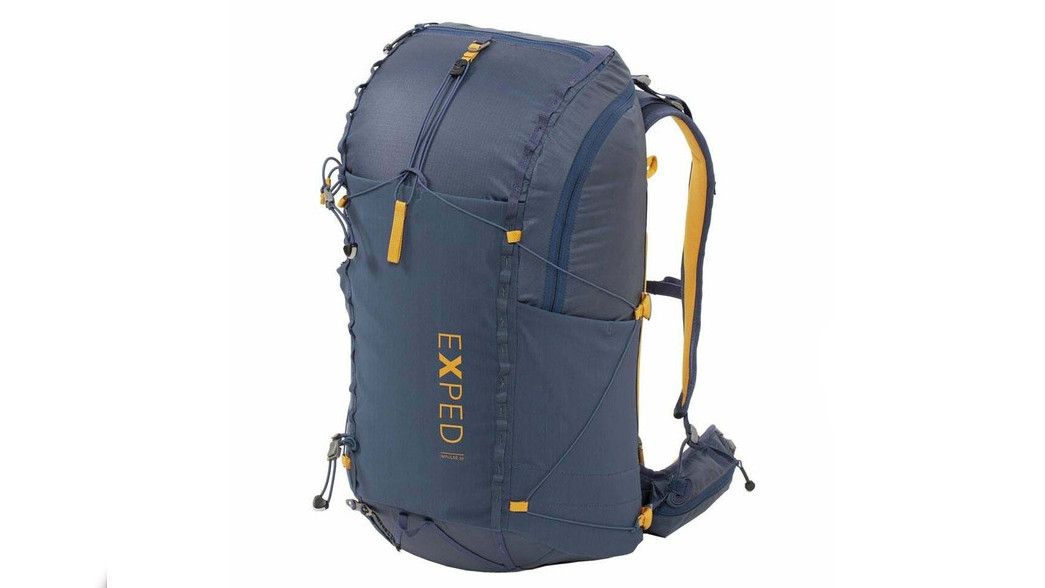
1. Exped Impulse 30L
Our expert review:
Specifications
Reasons to buy
Reasons to avoid
The Exped Impulse 30 backpack is a tough backpack and one that we think is a highly versatile beast. Made from a durable 210 Denier material, this daypack was able withstand the toughest abrasion when scrambling through the mountains, but it was equally at home when we were out and about on the hills, thanks to its versatile system. There are a number of adaptable features, from a removable back plate, to detachable hip belts for those who prefer to keep their adventures fast and light. There are several well-considered technical features, from an inside mesh pocket to zipped pockets on the hip fins.
The internal mesh pouch is for holding a hydration bladder. In addition, two mesh side pockets made it easy for us to stow away everything from drinks bottles to trekking poles, making it the perfect practical pack for a multitude of activities.
What’s more, the pack has some of the greenest credentials of those on test, with the Oeko-Tex Standard 100 certification, meaning every component has been checked to make sure the materials are not harmful to human health, while also being certified as PFC-free. For those who want a backpack that can adapt to a range of mountainous and hill activities – we think this pack is perfect.
The best running backpack for simplicity
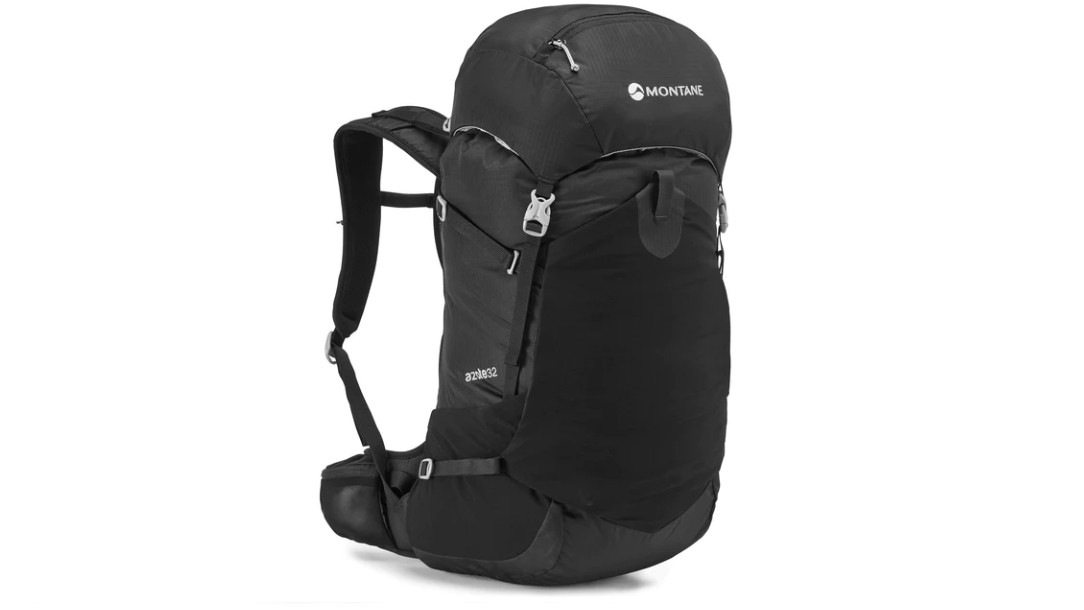
2. Montane Azote 32
Our expert review:
Specifications
Reasons to buy
Reasons to avoid
The Montane Azote 32 is brilliantly designed and was able to deliver everything we needed for everyday escapades, as well as some extra capability for peak-grabbing adventures (including a pole and axe attachment), but with a clean look and more minimalist finish.
The main harness is constructed with breathable mesh, with a foam frame behind it to minimize contact with the lower back, which significantly reduced sweating on test. The pack’s adjustable sternum strap has a Click-and-Go system, which we were able to operate with one hand. When we needed to stash wet gear, or keep a sheet map/extra layer handy, the large, mesh sleeve pocket on the front was invaluable. A pair of side pockets swallow water bottles (cleverly placed at an angle, so you can actually reach them while wearing the pack, without dislocating your shoulder). In addition, there is a sleeve for taking a hydration bladder.
Impressively, the Azote is mostly made from recycled fabric. The main section is constructed with RAPTOR Eco 100 denier Robic Nylon – 78 per cent recycled, which is both durable and lightweight. All in all, we love this simple and versatile pack.
The best small running backpack
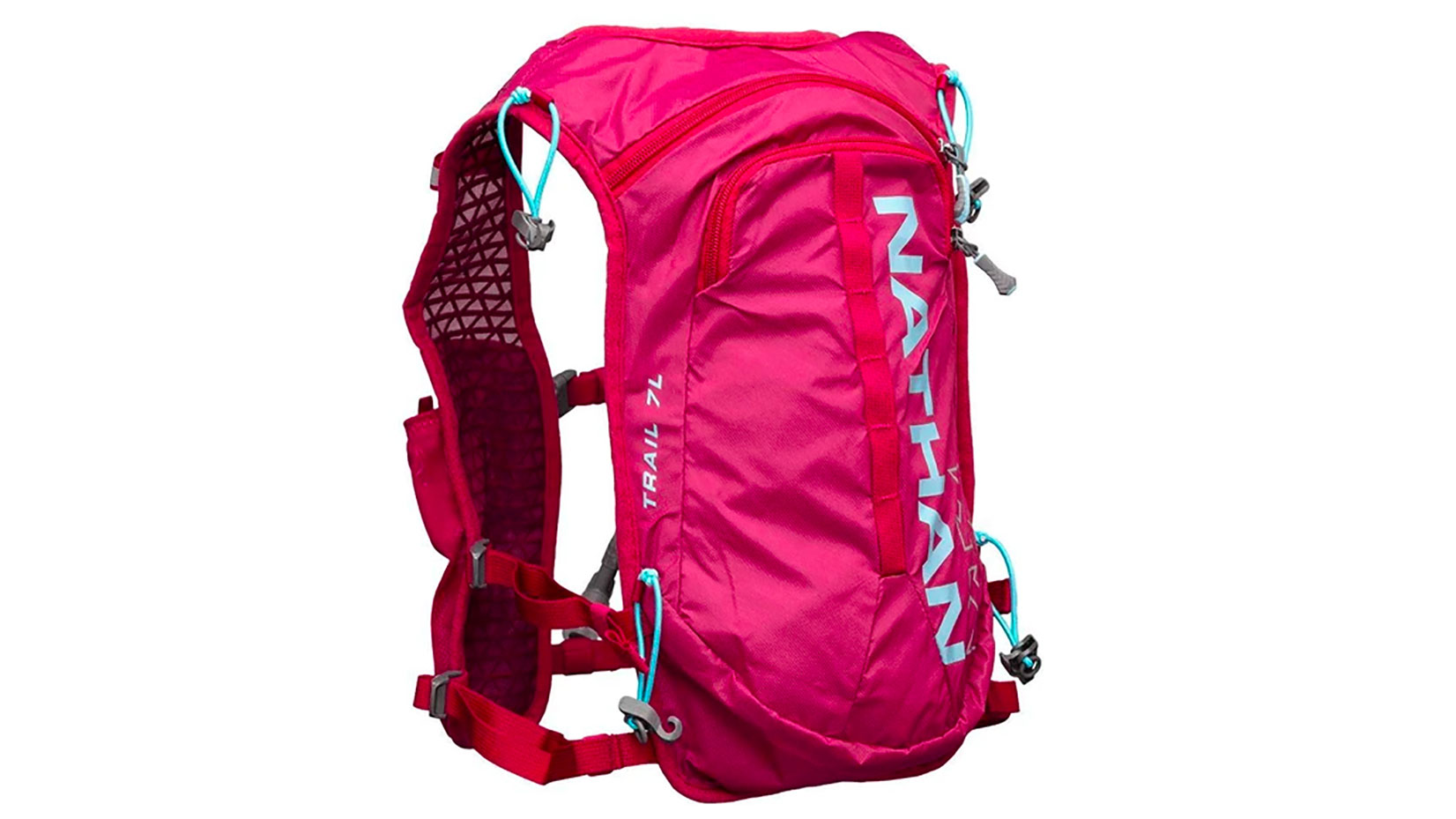
Specifications
Reasons to buy
Reasons to avoid
"Super-comfortable, airy, flexible, easy-wearing pack for a fun adventurous day on the trails," says our expert tester. We think this nimble, super-comfortable vest is a gem at a very good price. While space is limited as compared to others on this list, there’s sufficient storage for a day adventure’s requirements, such as raincoat or windbreaker, snacks and other essentials. We particularly liked the simple, convenient way that storage is arranged, with two deep, zippered pockets in the back plus three easy-to-access stretchy pockets up front for an easy-grab of your phone, gels or sunscreen.
Hydration is well-served by a 2L bladder, and a drinking tube secured up front with a sternum clip. If you’re not a bladder fan, you can sink an 18 oz bottle (not included) into a pocket up front. A gender-specific design helps dial in fit, but that said, our male and female testers both tested the male version, and found it could be quite easily adjusted to suit them both. However, if you’re a woman who’s either large-chested or more petite in stature, consider seeking out the female version for a more nuanced fit.
Hikers and trail runners will appreciate the elastic holders for stowing poles. Overall, the Nathan Trail-Mix 7L is well-suited to trail running, day hiking and scrambling.
Read our full Nathan Trail Mix 7L review
The best value running backpack
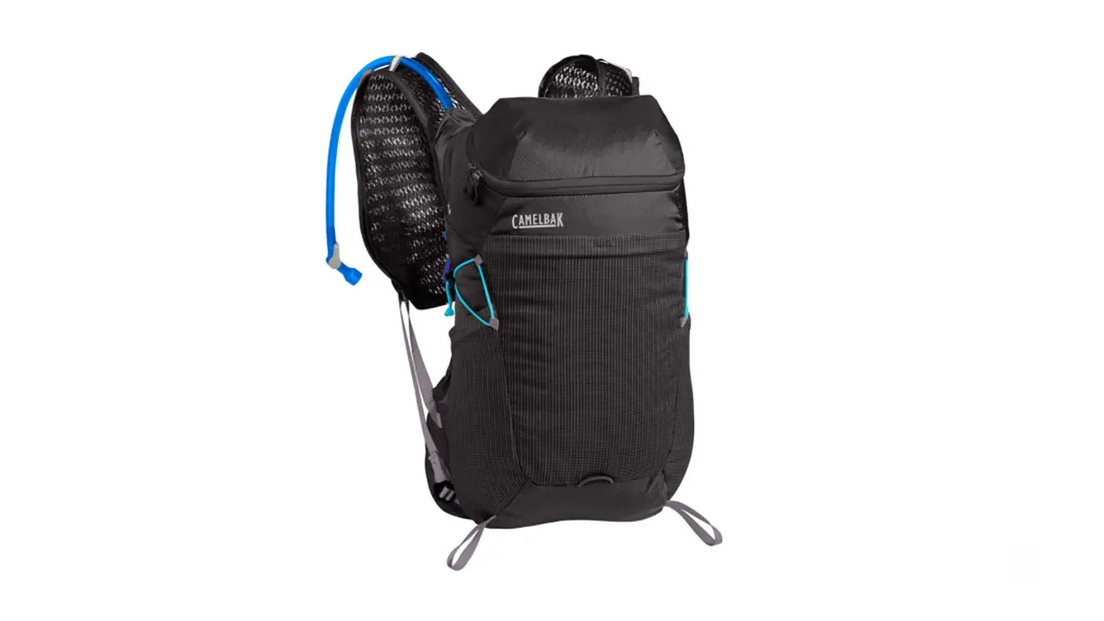
Specifications
Reasons to buy
Reasons to avoid
We found that this roomy running backpack will comfortably and securely tote all the gear, hydration and snacks you need for several hours out. Though quite pliable and lightweight, it has some elements of a traditional backpack, offering some structure in back. While not a full-on internal frame, the lightly padded frame sheet makes packing, retrieving and refilling a bladder much easier than with flimsier packs, where considerable stuffing can be required.
The low weight combined with the structure and padding may also make this an option for backcountry snow sports, depending on gear, and its easy-to-wear design even led one tester to use the padded reservoir space for a laptop, making this an excellent commuter pack. Materials are tough and durable, and mostly non-abrasive, though wearing a T-shirt is going to work better than a tank top, where we noticed some chafing on exposed skin during a particularly long, hot walk.
While the model is unisex, easy-sliding sternum straps and another set of adjustable straps at the hips dial in the fit. That said, if you’re petite or have a shorter torso, consider trying this one on before buying to ensure you can get the fit you want. Our expert tester said it was "well-suited for day hiking, hut-to-hut trips, backcountry snow sports and commuting."
Read our full Camelbak Octane 18 Hydration Pack review
The best running backpack for balance
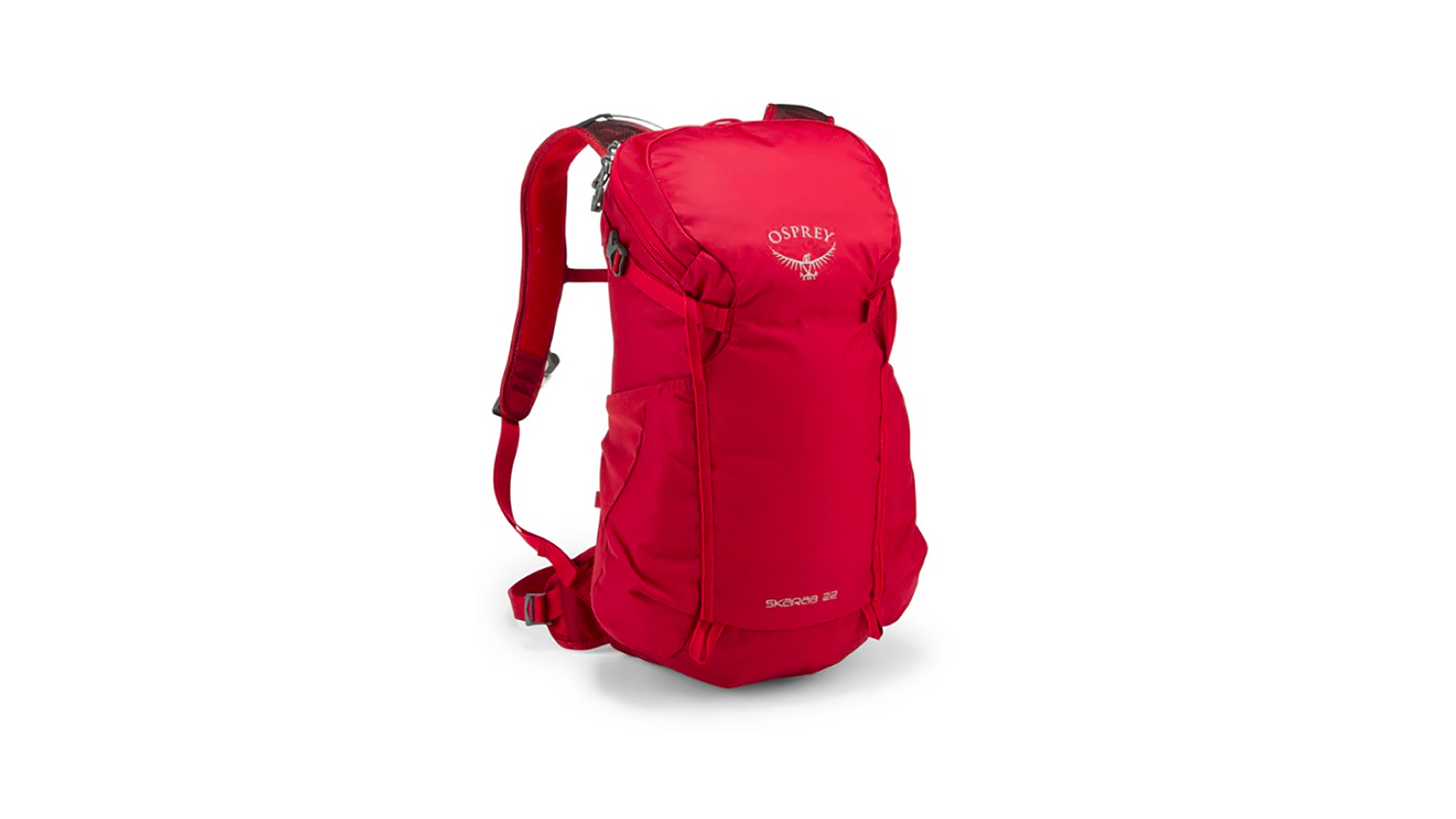
Specifications
Reasons to buy
Reasons to avoid
The Osprey Skarab 22 fuses modern style and materials with a classic rucksack design featuring an easy-access, wide-mouth, bucket-style storage area, a zippered slash pocket on top and two stretchy, open-air side pockets. Our tester took this pack up and down Mt Sheridan and Bear Peak in Boulder, finding it "to be a classic daypack for hiking with an effective hydration system that’s easy to refill and store."
It’s ideal for carrying just-what-you-need gear for multi-hour hiking adventures, whether that’s extra clothes, camera equipment or a picnic lunch. The adjustable strap system is highly effective in adapting to different hiker shapes, sizes and personal preferences. The dedicated hydration reservoir compartment keeps 2.5L of liquid securely stored, while elastic tube management loops on the pack’s front straps make drinking easily accessible on either side.
One of the best aspects is the open-mesh, foam AirScape back panel that not only keeps sweat to a minimum, but it also provides insulation for the hydration reservoir. We appreciated the attachment loops for trekking poles on the back of the pack, but we would have loved easy-access waist-belt pockets that could allow retrieval of key items without having to take off the pack.
Read our full Osprey Skarab 22 daypack review
The best running backpack for pockets
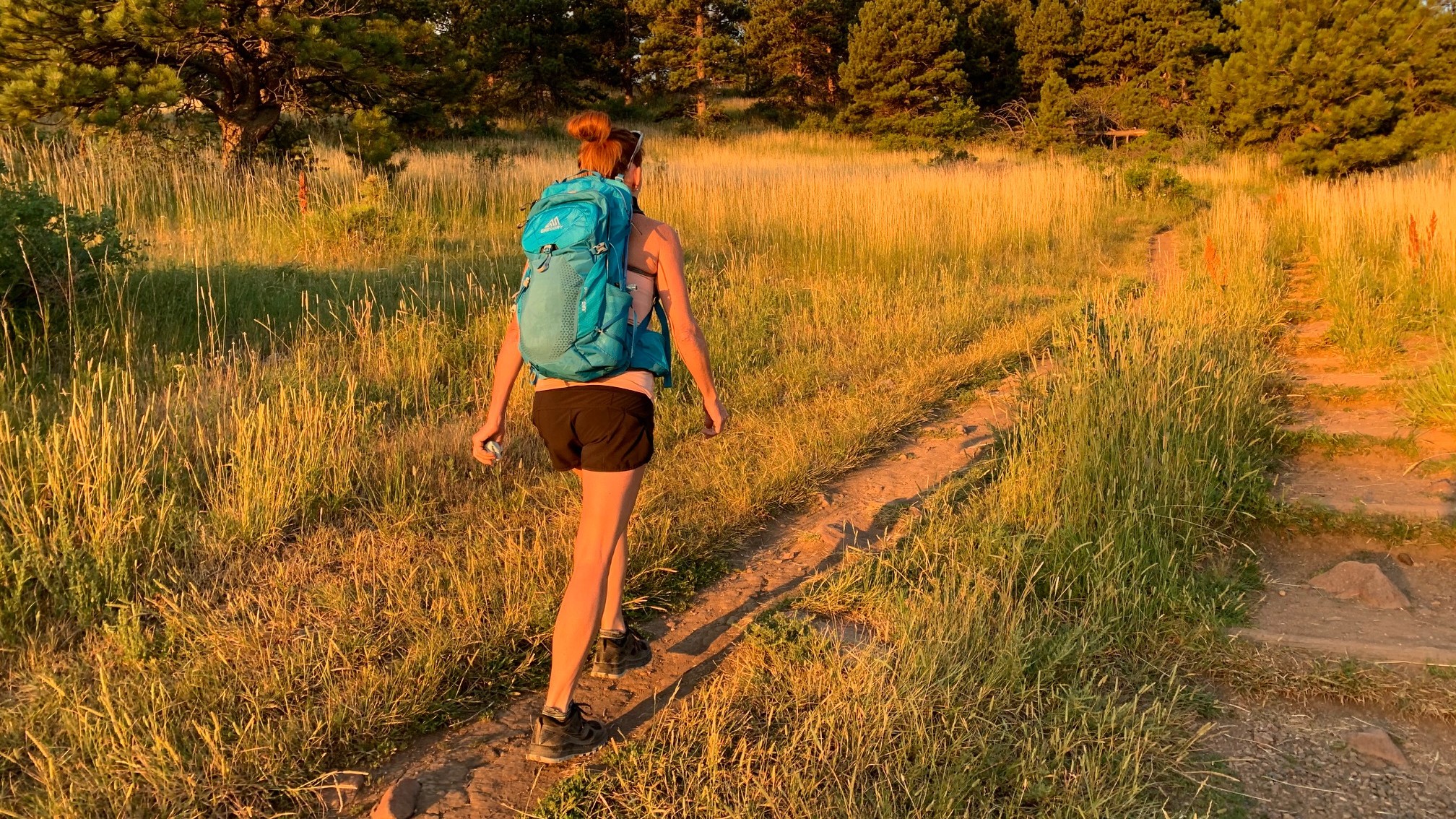
Specifications
Reasons to buy
Reasons to avoid
We loved this pack for on our wear-testing excursions in Colorado, especially because the ever-changing weather conditions forced us to continually remove or add layers of clothing. Our tester said that "the Citro 24 H20 is easy to get on and off and a breeze to wear on long days."
The well-organized storage system includes a large main compartment and a zippered interior security pocket with a key clip, one large external pouch, two large mesh side pockets, two zippered waist-belt pockets and a zipper slash pocket on top with a dedicated sunglasses compartment. But as much as we think this one of the best running backpacks, our favorite part of this outfit is the 3D hydration bladder and the dedicated hydration sleeve and hanger that provides for simple, one-handed, snap-and-go fillings and attachment/removal. It’s by far the best hydration reservoir system we tested.
The Citro 24 H20 is ideal for long runs and traditional hiking endeavors, but it’s also optimal for peak-bagging adventures, minimalist bivouac outings and hut-to-hut trekking excursions.
Read our full Gregory Citro 24 H2O review
The best waterproof running backpack

Specifications
Reasons to buy
Reasons to avoid
The Trailblazer combines ultralight weight with a body-hugging design, which meant we were able to run far and fast without our gear bouncing around or slowing us down. Montane has cut way down your typical zips and buckles to get its pack weight down to just 300g, and in their place has used innovative solutions for adjusting the carrying straps and sealing pockets.
The roll-top opening makes way for 20 liters of space within the main body that is complemented by four extra pockets. Once we fitted it, it stayed in place even on technical trails, and the mesh backing and straps didn't get overly sweaty on hot, humid days.
The bungee cord design works as both compression, to keep you more aerodynamic, and also holds extra gear along with pole attachments in the shoulder straps for those of you who run with poles. This lightweight and comfortable running backpack is competitively priced compared to other running backpacks we’ve tested, and features an innovative – if a little complicated – design. It's one that "you’ll like once you get the hang of," according to our expert tester.
Read our full Montane Trailblazer LT 20 running backpack review
The best women’s running backpack
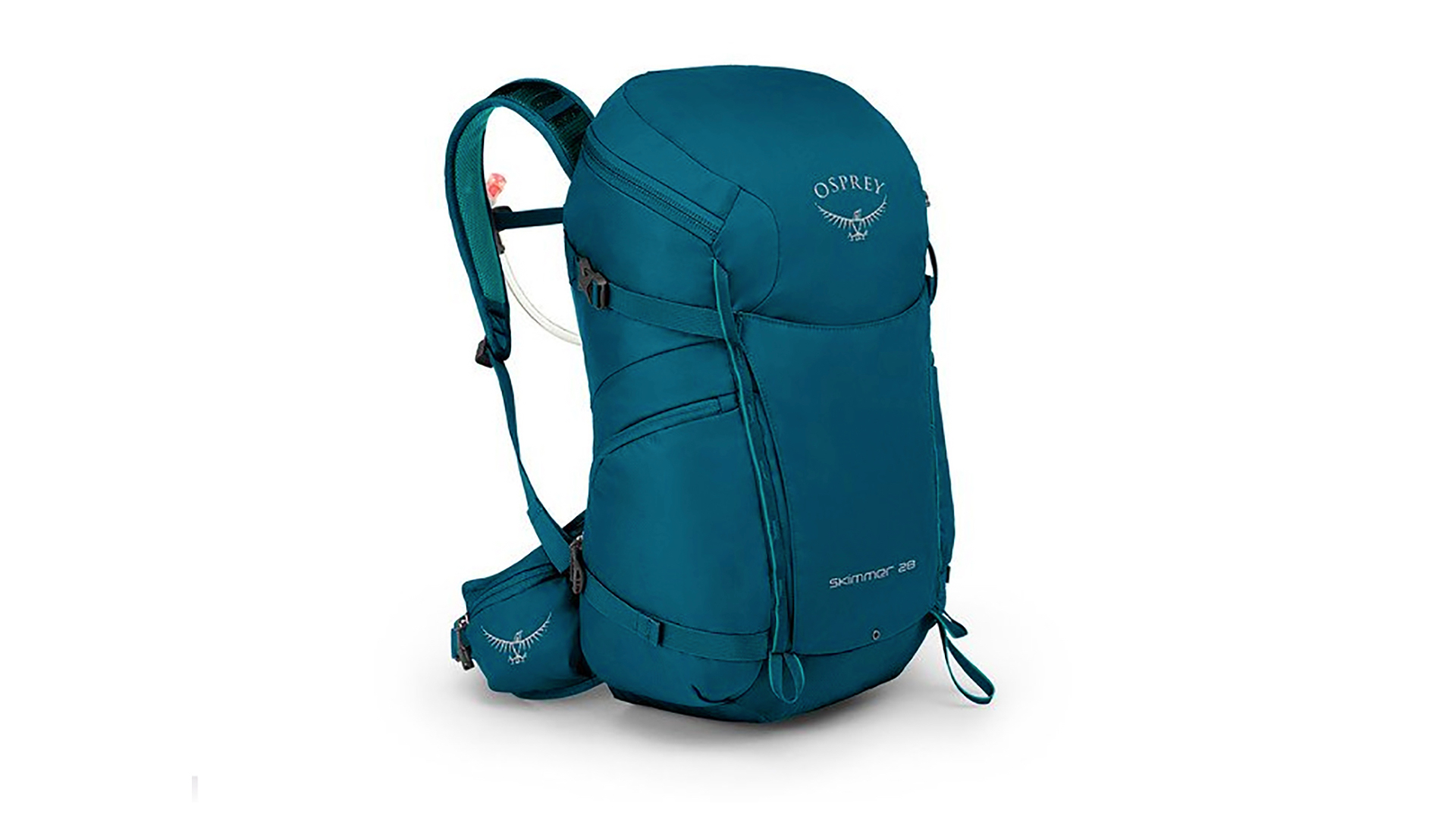
Specifications
Reasons to buy
Reasons to avoid
This spacious, no-nonsense pack – while heavier than some we tested – is a good option for adventurers seeking a happy medium between chunky external-frame packs and completely structureless ones. We found that the padded frame sheet combined with a wide-mouth top makes super-easy to pack and retrieve gear with this bag.
The model is female-specific, with narrower cuts to the shoulder and hip straps to better suit a female shape, and we found this helped mitigate movement/friction as well as allowed us to better balance and manage heavy loads.
Storage is ample with a variety of roomy pockets for gear, food and other essentials, but our expert tester said tha it was "not as accessible as we’d have liked – other than the zippered pockets at the hip, you pretty much have to take off the pack in order to access your stuff." Trekking poles and an ice axe can be stowed in loops up front and easily retrieved as needed. It’s well-suited for long days running or hiking in the hills, for fastpacking and hut-to-hut adventures, and even backcountry snow sports.
A similar men’s version of this pack is the Osprey Skarab 30.
Read our full Osprey Skimmer 28 review
The best running backpacks comparison table
| Backpack | RRP | Weight | Gear capacity |
| Exped Impulse 30L | $153 (US) / £115 (UK) | 978g / 2.1lb | 30L |
| Montane Azote 32 | $135 (US) / £110 (UK) | 925g / 33oz | 32L |
| Nathan Trail-Mix 7L | $100 (US) / £85 (UK) | 312g / 11oz | 7L |
| Camelbak Octane 18 | $125 (US) / £100 (UK) | 398g / 14oz | 16L |
| Osprey Skarab 22 | $100 (US) / £75 (UK) | 662g / 1lb 7.4oz | 22L |
| Gregory Citro 24 H20 | $140 (US) / £115 (UK) | 916g / 2lb | 24L |
| Montane Trailblazer LT 20 | $130 (US) / £100 (UK) | 300g / 10.6oz | 20L |
| Osprey Skimmer 28 | $130 (US) / £90 (UK) | 758g / 1lb 10.7oz | 28L |
How we test the best running backpacks
Our reviewers trail-tested these packs in the hills and mountains of Colorado, the Scottish Highlands, and Dartmoor and Exmoor in southern England, on adventures ranging from long training runs to multi-day fastpacking forays.
Meet the testers

Casey loves anything involving running, particularly if it also involves her beloved mountains. She's adventured around the world, from the Indian Himalayas to the DMZ in Korea. Based in Colorado, she's steadily working her way through the 14ers and is an expert when it comes to testing running gear.

Pat's outdoor adventures have taken him around the world. He's set short-lived records on some of Australia's highest peaks and on New Zealand's great walks. He lives in Devon in South England and revels in taking to his local coastal trails for long running missions. A seasoned outdoor gear expert, he gives every bit of kit he receives a thorough test.

Julia loves running her local Scottish trails and often shoulders a running pack to head for the Munros of the Scottish Highlands. As one of Advnture's full time staff writers, she has great experience of reviewing outdoor kit and thinks there's nowhere better to test the quality of running gear than on wet, windy days in Scotland.
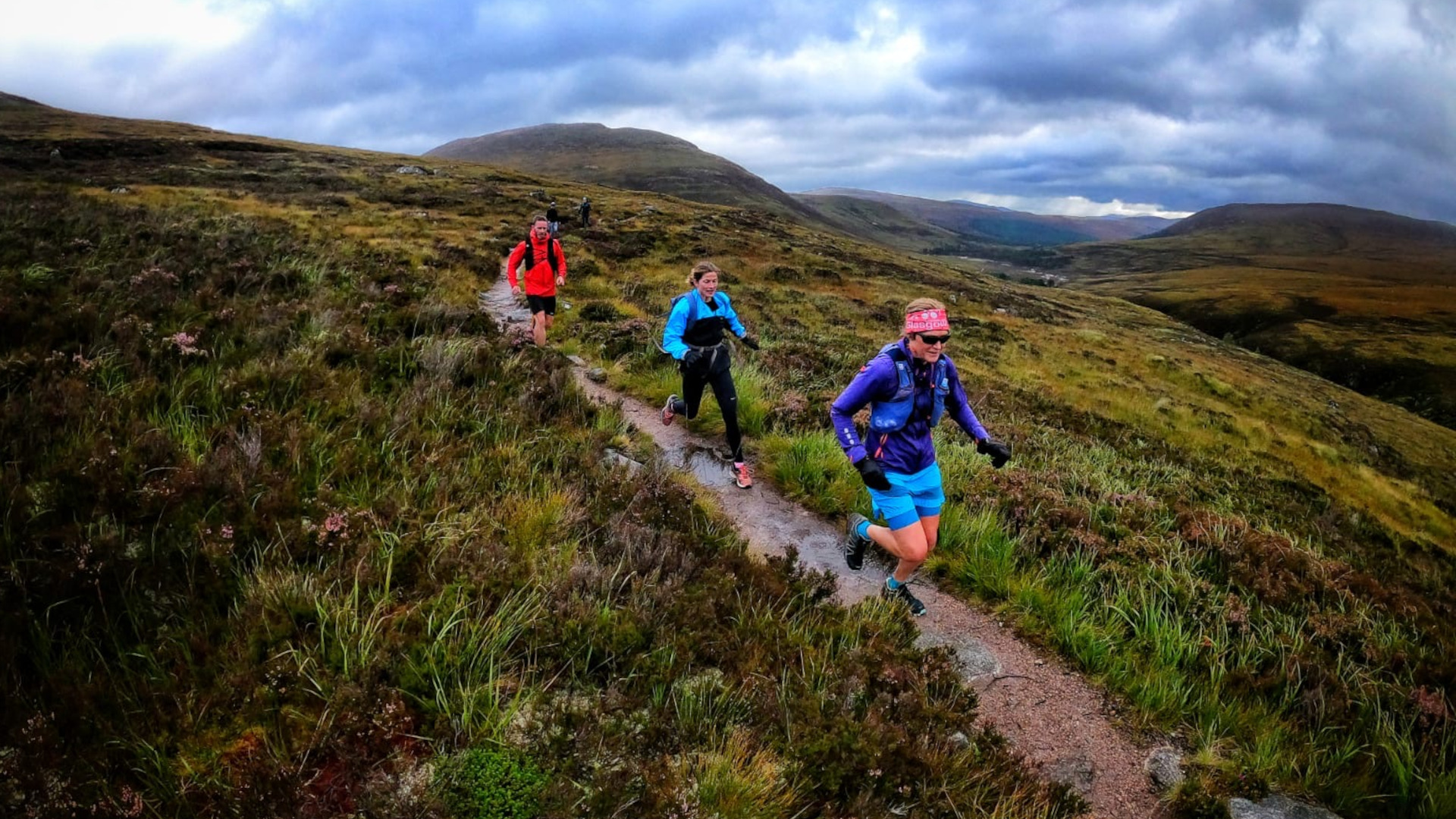
Fiona is rarely seen without her running skort and faithful hound bounding along the trails with her. Another reviewer who often takes to the Scottish hills and mountains, Fiona has a deep love for exploring the wild places at speed.
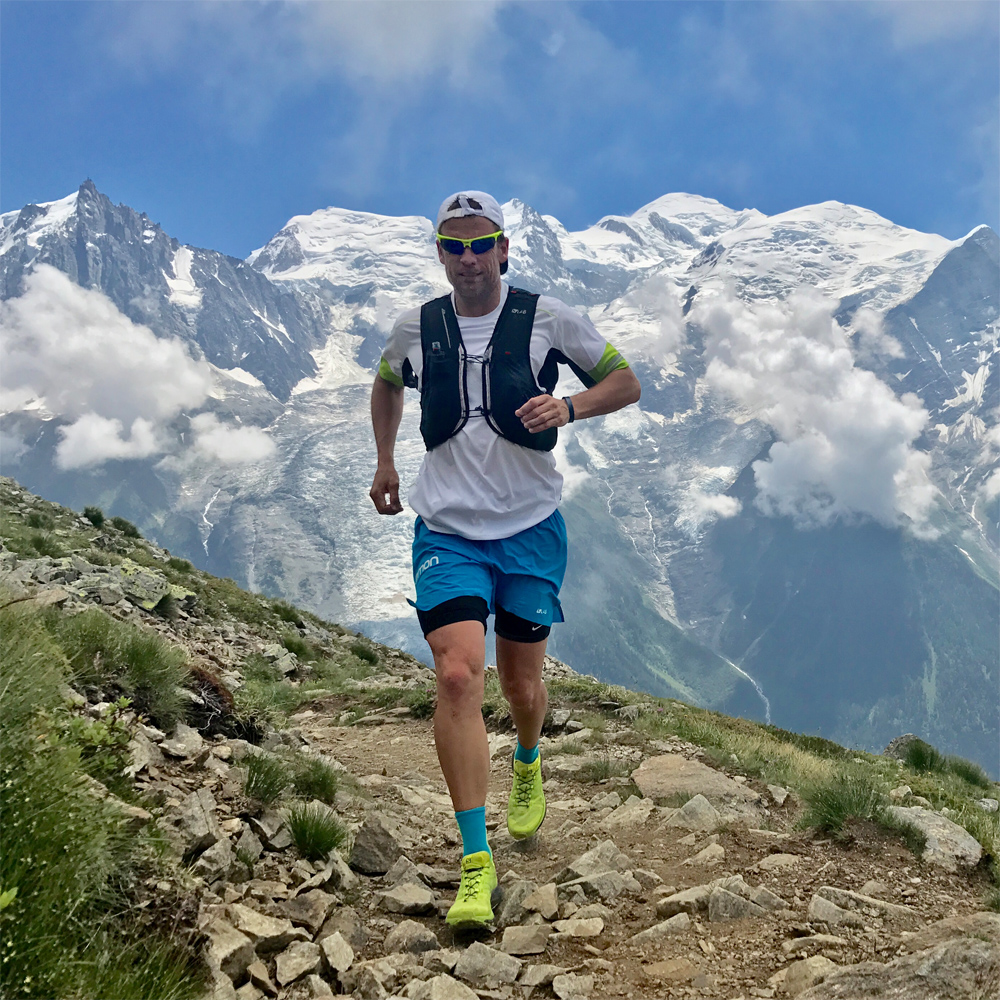
What Brian doesn't know about trail running gear isn't worth knowing. In his time as an outdoor kit expert, he's tested over 1,500 pairs of running shoes and taken them to incredible places while he was at it. Based in Boulder Colorado, he's often off exploring the mountains of the state and returning with tales to tell.
How to choose the best running backpack
While hydration vests focus overwhelmingly on carrying water – making the space for other items very limited – the best running packs are more like daypacks, offering much more capacity, ranging from around 4L to 30L. So there are a range of volumes to consider, as well as a myriad of features:
What size should a running backpack be?
How long you will be out for, and whether you are running or fastpacking, will dictate the size of the best running backpack for you. In addition, if you plan to take part in trail running races and events, you are likely to require a pack that fits all your essential kit. It will also depend on the seasons: in summer you will require less spare clothing compared to winter. A training session or adventure of around a day will usually require four to 10 liters of volume.
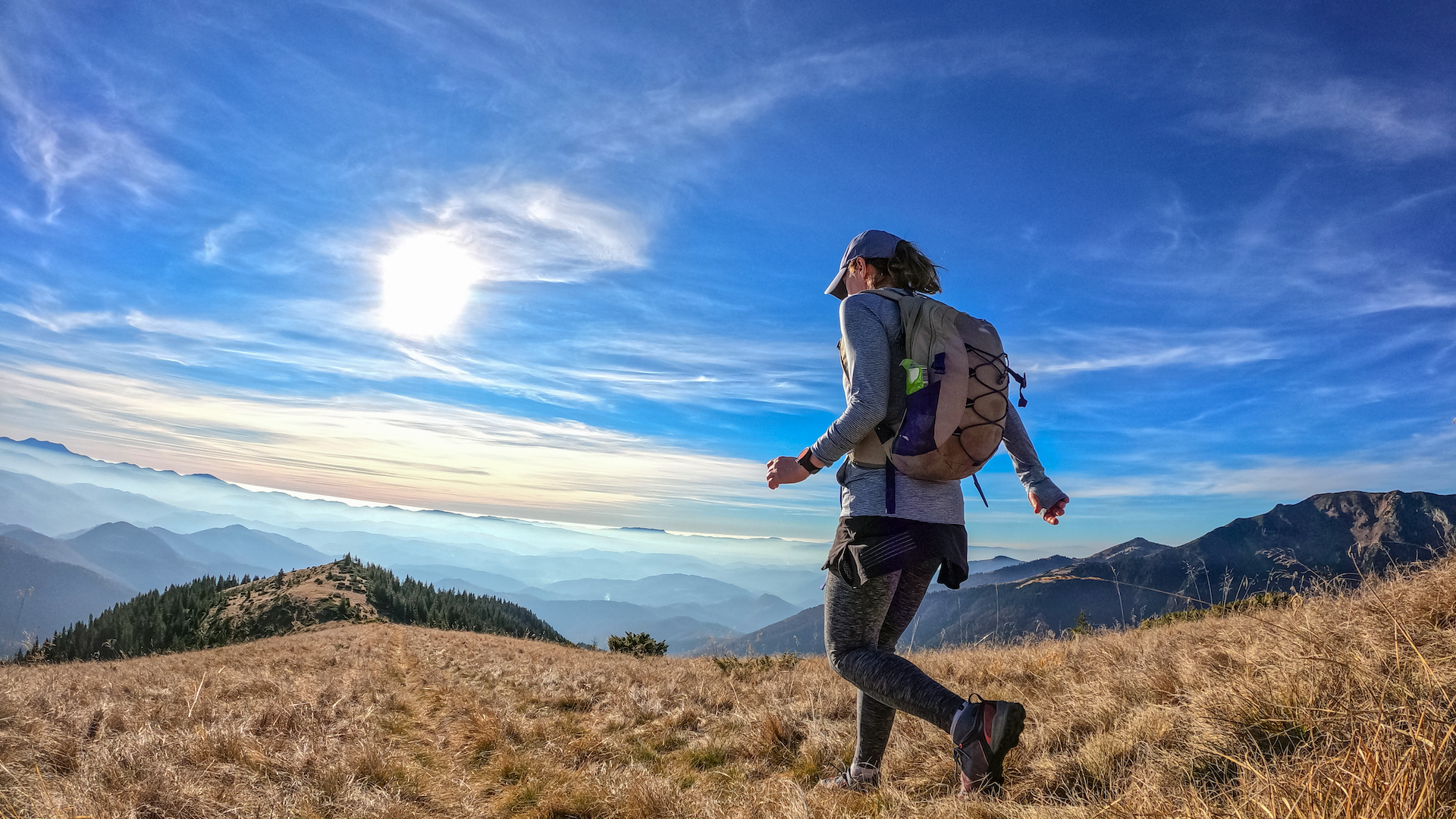
How should a running backpack fit?
The aim of a running pack is to have a snug fit. The best running backpacks sit high on your back and shoulders and should not move around too much. It is important that the main part of the harness fits you comfortably on the shoulders but not too tightly because you want your arms to be able to move freely.
Check that you can also adjust chest straps to give a neat fit. Women should make sure the chest straps suit their chest size. Most straps can be moved up and down as well as tightened to give a comfortable fit.
What materials are running backpacks made from?
The best running backpacks should be made of robust materials to withstand the abrasion of repetitive use on the trails. Some have a water repellent treatment or they are made of waterproof fabrics. Packs with a lightweight mesh back and a bit of padding make a good choice
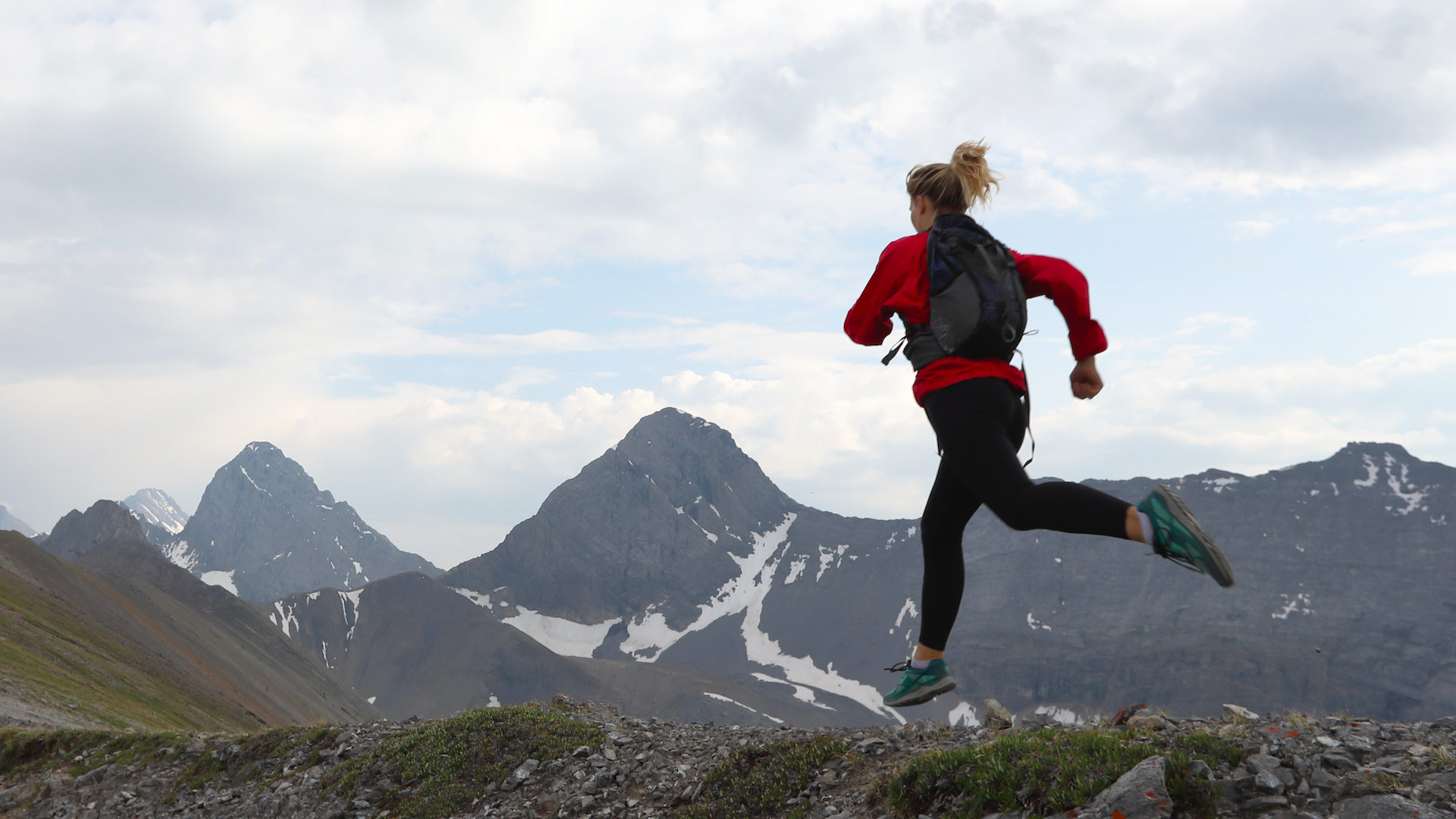
What pockets should a running backpack have?
Some people love lots of pockets and others prefer a simpler system. It’s a matter of opinion. However, it is undeniably useful to have some zipped pockets so you can ensure that valuables don’t get lost as you run, and pouches and pockets on the harness for storing snacks, a headlamp and a mobile phone are a real bonus (see our guide to the best headlamps for some good options).
What other considerations are there when choosing a running backpack?
Some clips and adjustors can be fiddly on running packs, so you should check that you can use them easily. Think about how it will be with cold hands or your best hiking gloves. If you are long-sighted, it is not always so easy to clip the chest straps because they can seem to be too close to your eyes to focus.
A bungee compression strap on the outside of the pack is useful for carrying extra clothing that you might need in a hurry.
A whistle is usually on the essential race kit list so check if the pack has one of these, too. Sometimes a zipper will double as a whistle.
Most of the best running backpacks have elastic straps for carrying poles when you are not using them. Try this system to see if it suits you because some people prefer to carry them at the rear, while others at the side.
Small pockets for stashing gels, snacks and bits and pieces are really useful, especially if you can reach them while the pack is still on.
Advnture Newsletter
All the latest inspiration, tips and guides to help you plan your next Advnture!

Author of Caving, Canyoning, Coasteering…, a recently released book about all kinds of outdoor adventures around Britain, Pat has spent 20 years pursuing stories involving boots, bikes, boats, beers and bruises. En route he’s canoed Canada’s Yukon River, climbed Mont Blanc and Kilimanjaro, skied and mountain biked through the Norwegian Alps, run an ultra across the roof of Mauritius, and set short-lived records for trail-running Australia’s highest peaks and New Zealand’s Great Walks. He’s authored walking guides to Devon and Dorset, and once wrote a whole book about Toilets for Lonely Planet. Follow Pat’s escapades on Strava here and Instagram here.
